Electric Earth: Stunning Images of Lightning
Lightning seen from space
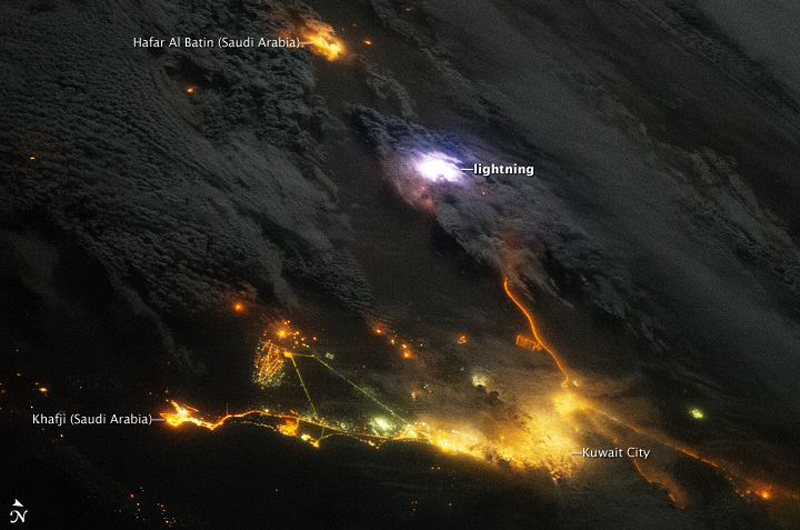
This image of lightning over Kuwait was taken by an astronaut aboard the International Space Station on Dec. 12, 2013.
Bolivia lightning

The glow of this lightning strike was captured by an astronaut aboard the International Space Station on Jan. 9, 2011 while traveling over Bolivia.
Stunning Lightning Strike
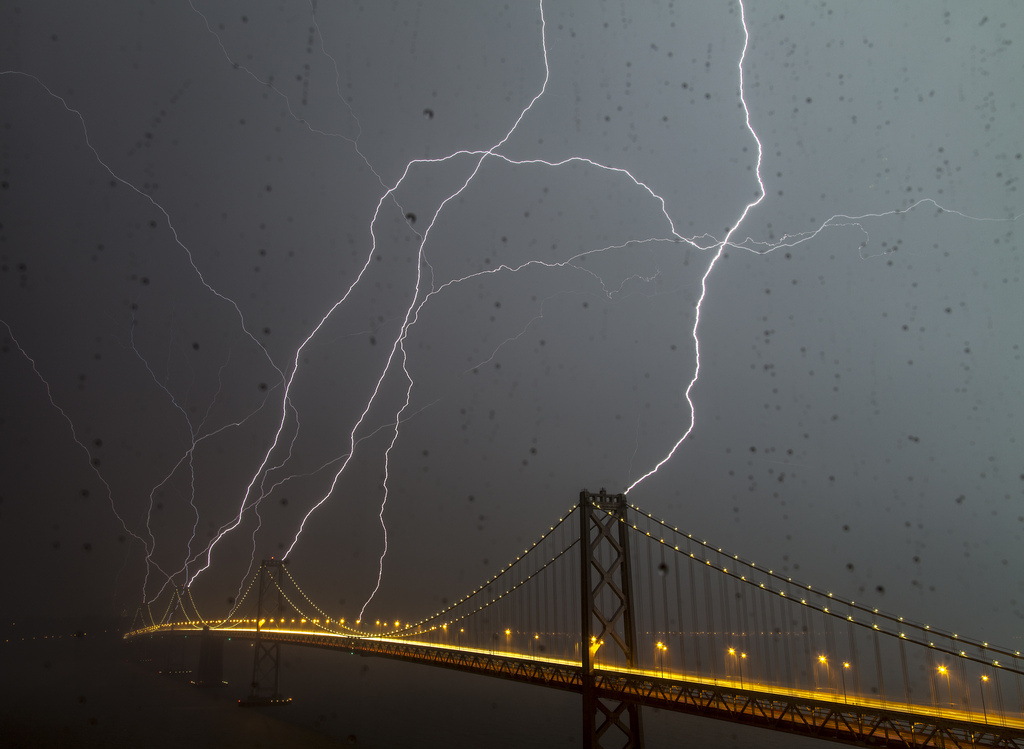
This gorgeous 20-second exposure of lightning striking the Bay Bridge in San Francisco went viral in April 2012.
Where Lightning Strikes Way More Than Twice

Clear skies rarely prevail at the mouth of the Catatumbo River in Venezuela. Here, it storms on average every other night, as moist, warm winds meet the nearby ridges of the Andes and explode into electrifying tempests. The lightning is so consistent that sailors have been known to navigate by its glow, which even reportedly saved the city of Maracaibo from attack by the English pirate Sir Francis Drake in 1595. According to a 1597 poem, the lightning illuminated Drake’s fleet, alerting the city to the pirate's presence.
That's Space-y! Red Sprites & Lightning Flashes
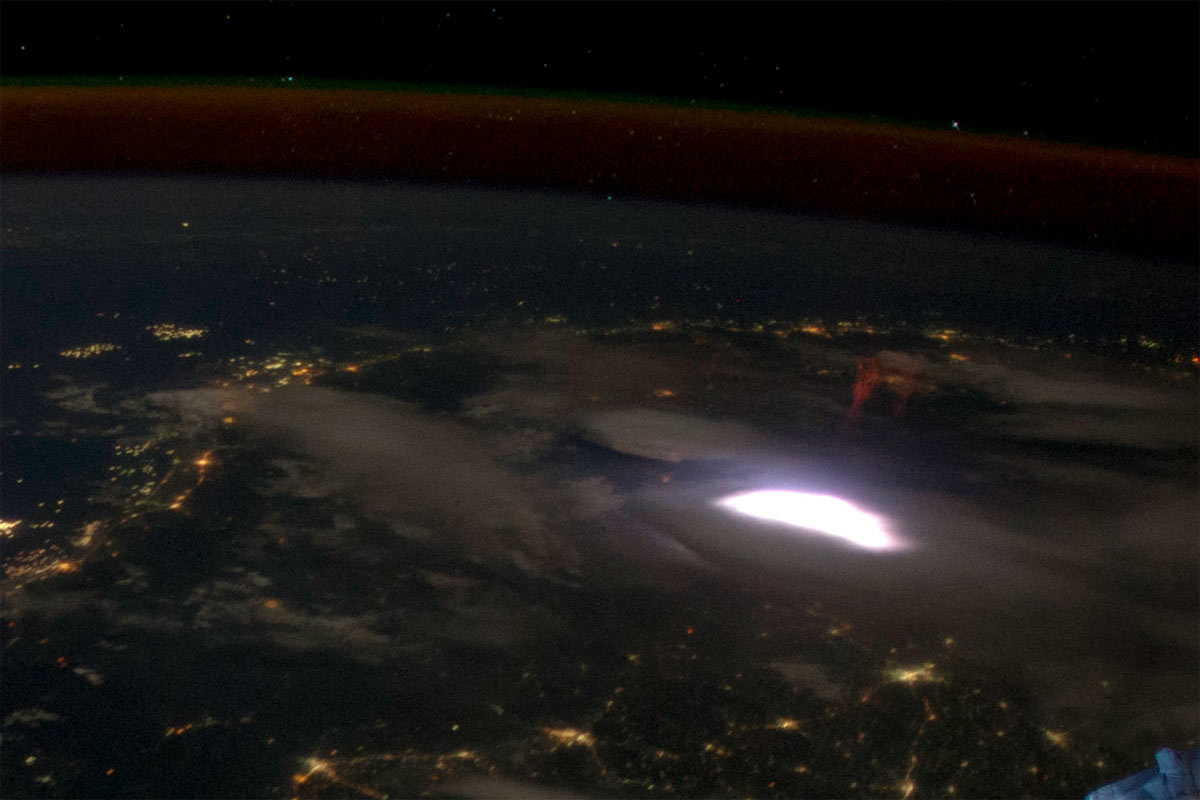
Glowing sky phenomena can make for beautiful photos. This one, captured by Expedition 31 astronauts aboard the International Space Station on April 30, 2012, reveals a red sprite and lightning flash. The photo was taken while the ISS traveled southeast from central Myanmar (Burma) to just north of Malaysia.
Red sprites are difficult to observe because they last for just a few milliseconds and occur above thunderstorms, so they are usually blocked from view on the ground by the very clouds that produce them. They send pulses of electrical energy up toward the edge of space (the electrically charged layer known as the ionosphere) instead of down to Earth’s surface. They are rich with radio noise, and can sometimes occur in clusters.
For decades, pilots reported seeing ephemeral flashes above storms, but it was not until the 1990s that scientists were able to verify the existence of these electrical discharges. A sprite was first photographed by accident from an airplane in 1989, and observers on the space shuttle captured several more images with low-light cameras in 1990 and in subsequent missions. Viewers on the ground can occasionally photograph sprites by looking out on a thunderstorm in the distance (often looking out from high mountainsides over storms in lower plains.)
Bolt of Lightning

Automobile lights seem to head in and out of a bolt of lightning in the northern Antelope Valley near Palmdale, California. The lightning ignited numerous small fires.
Gigantic Flash
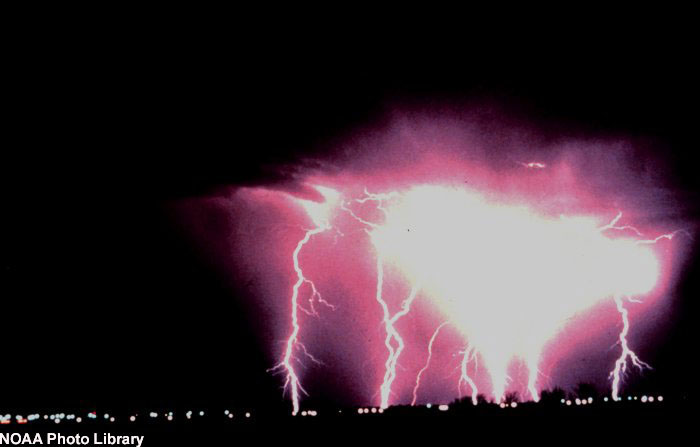
Intense cloud-to-ground lightning was caught using time-lapse photography during a nighttime thunderstorm.
Get the world’s most fascinating discoveries delivered straight to your inbox.
Wonder of the Sky

Shown above are multiple cloud-to-ground and cloud-to-cloud lightning strokes, during a nighttime thunderstorm.
High Voltage
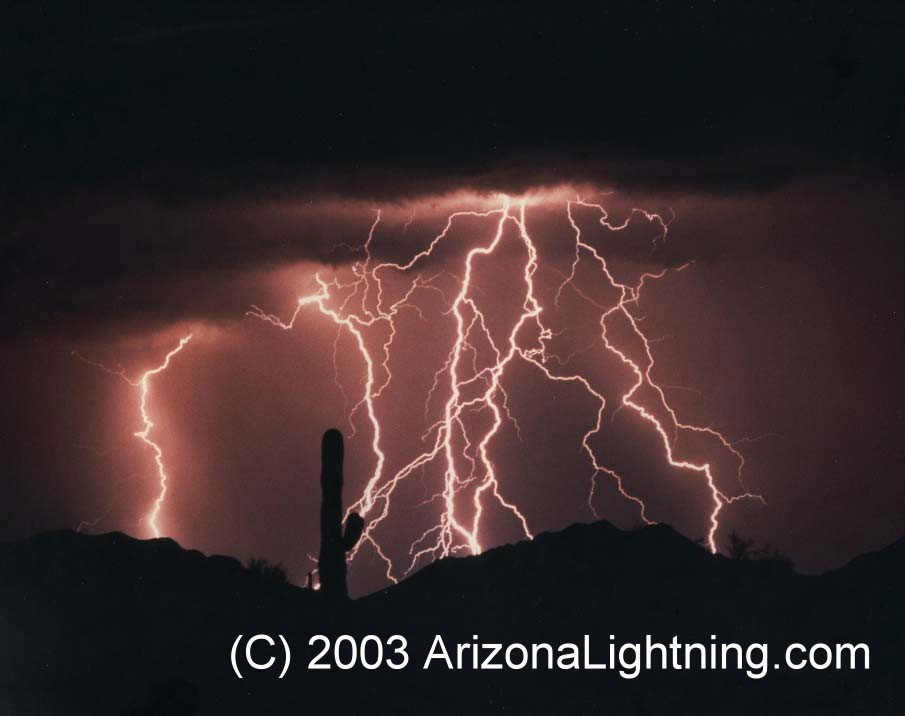
Thunderstorm and lightning takes place shortly after sundown.
Lightning Strike

Lightning strikes over homes in Toronto, Canada.
Electric Discharge

Multiple cloud-to-ground lightning strokes are captured in this great lightning shot.


